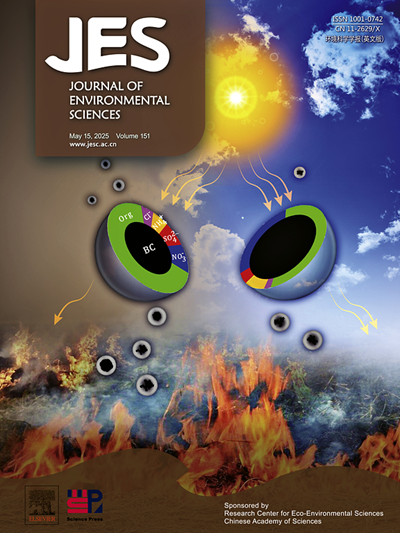Hematopoietic responses to metal-organic frameworks in adult mice following pulmonary exposure
IF 5.9
2区 环境科学与生态学
Q1 ENVIRONMENTAL SCIENCES
引用次数: 0
Abstract
The metal-organic frameworks (MOFs) MIL-100 and NH2-MIL-125 have hierarchical structure pores with high adsorption capacities and have therefore been suggested for drug delivery, gas storage, catalysis and chemical sensing. The widespread applications of these MOFs raise concerns about the possible release into the environment and subsequent human exposure. Yet, the available knowledge of the toxicity of these MOFs is rather scarce despite the encouraging applications. Here, we investigated the hematopoietic effects in different organs induced by MIL-100 and NH2-MIL-125 in mice after intratracheal instillation. The hematopoietic cells in the bone marrow (BM), lungs, and spleen were analyzed through flow cytometry method. Compared to NH2-MIL-125, MIL-100 triggered changes in more types of hematopoietic cells in the BM and spleen, but comparable changes in the lungs. In the BM and lungs, both the two MOFs suppressed myelopoiesis on day 1, but promoted myelopoiesis on day 7. In the spleen, by contrast, continuous suppressed myelopoiesis were found on day 1 and day 7. Moreover, changes in megakaryocyte progenitors (MkPs) were only detected in the lungs. These results unveil the potential disruption of hematopoietic homeostasis during inhalation of the two MOFs, which provided in vivo biological effect data for further evaluation of the biosafety of MOFs for future medical applications.

求助全文
约1分钟内获得全文
求助全文
来源期刊

Journal of Environmental Sciences-china
环境科学-环境科学
CiteScore
13.70
自引率
0.00%
发文量
6354
审稿时长
2.6 months
期刊介绍:
The Journal of Environmental Sciences is an international journal started in 1989. The journal is devoted to publish original, peer-reviewed research papers on main aspects of environmental sciences, such as environmental chemistry, environmental biology, ecology, geosciences and environmental physics. Appropriate subjects include basic and applied research on atmospheric, terrestrial and aquatic environments, pollution control and abatement technology, conservation of natural resources, environmental health and toxicology. Announcements of international environmental science meetings and other recent information are also included.
 求助内容:
求助内容: 应助结果提醒方式:
应助结果提醒方式:


